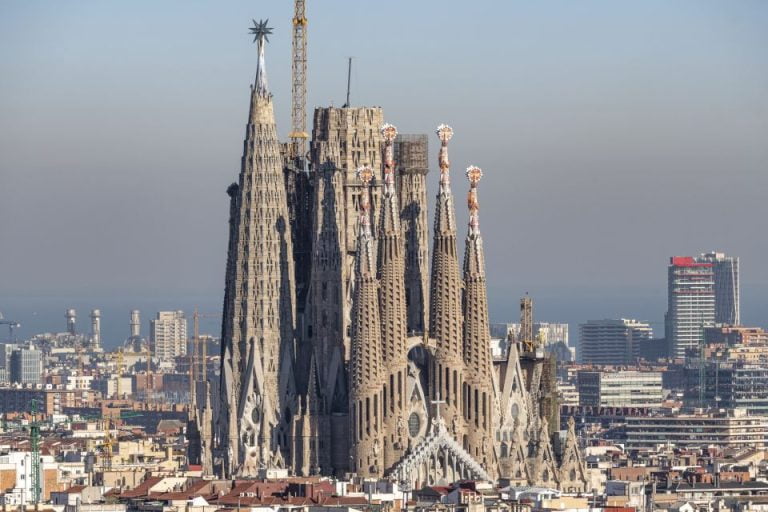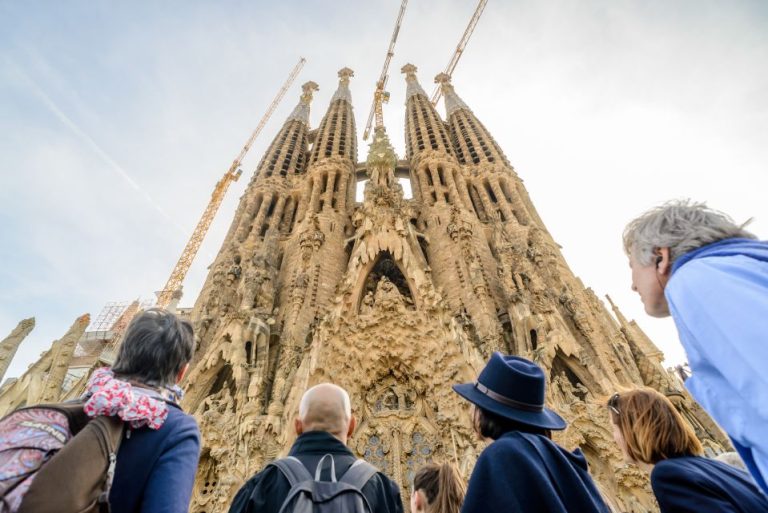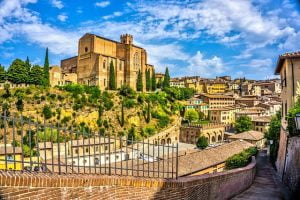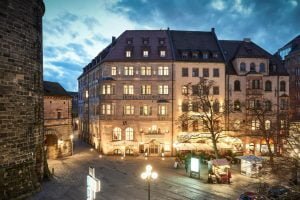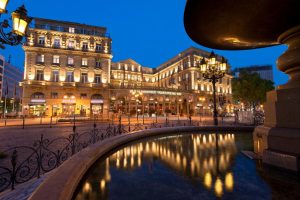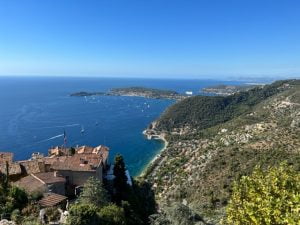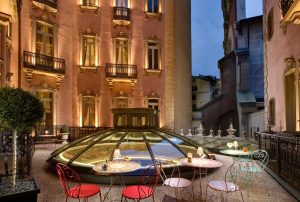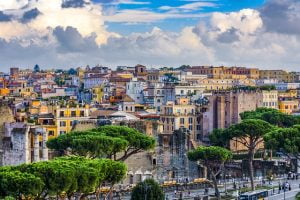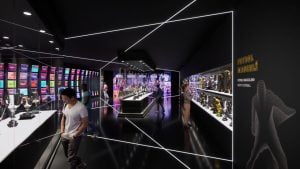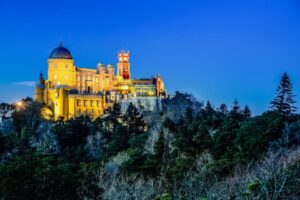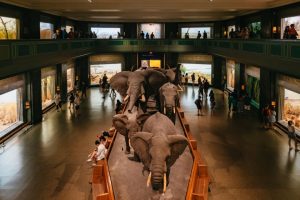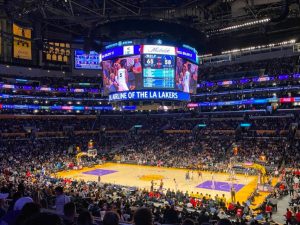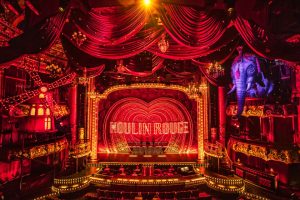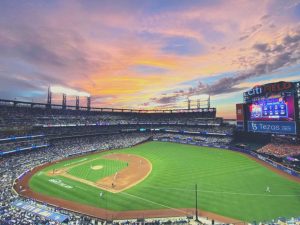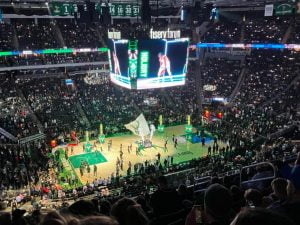Sagrada Família (La Sagrada Família)
Barcelona Church - Gaudi's unfinished story in Barcelona
Barcelona, the capital of Catalonia, is a city of endless wonders - a rich culture, a unique art scene and wonderful architectural buildings. Among all the magical sites in the city, it has a special site, which on the one hand seems to be closed for renovations, and on the other hand it is hard to ignore the magnificent and special building, from which a long line stretches at all hours of the day. Welcome to the Sagrada Familia, the jewel of Barcelona's architectural heritage.
The Sagrada Familia is actually a huge, unfinished Catholic basilica (we'll talk about that soon) located in the heart of Barcelona. The basilica was designed by the legendary architect Antoni Gaudí, and it perfectly reflects his life and works.
What makes the site so fascinating is the unique combination of its construction styles - Gothic style alongside Art Nouveau style, and the story of its continuous construction spanning more than a hundred years.
In the following article we will sort out everything you need to know before visiting the fascinating site.
So, let's start with Antoni Gaudi, where it all began…
The story behind the Sagrada Familia:
The idea of establishing the Basilica of La Sagrada Familia was born in the late 70s of the 19th century, and came from the mind of a Catholic bookseller named Joseph Maria Bocabella who dreamed of a church dedicated to the Holy Family - the family of Jesus and Mary. Gozep decides to form an association to raise funds for the basilica, and when he manages to collect enough money he purchases the prestigious land for the project. At the beginning of its construction, the basilica was designed by the well-known architect Francisco de Paula del Villar, and the basilica was designed in a traditional Gothic style. Construction began on March 19, 1882, with the laying of the first stone.
In 1883, a year after the start of the project, the architect of the project Del Villar decided to resign from his position due to differences of opinion with the promoters of the project. After Del Villar's resignation, a young and innovative architect named Antoni Gaudí entered the project.
Gaudi takes ownership of the project, some would say takes over the project, and decides to drastically change its design. Gaudi decides to combine in the project unique elements inspired by nature, and elements from Art Nouveau styles.
La Sagrada Familia became Gaudí's life's work, and he devoted more than four decades to its construction. Gaudi lived on the construction site and was immersed in the project at all hours of the day. Gaudi's relatives testify that the master architect focused exclusively on the basilica, and in those years he gave up on a number of job offers he received. Gaudí was aware that he would not get to see the completion of the project, which would take many years after his death, so he left detailed plans and models for the future architects.
In 1926 Gaudi was tragically killed, and since then construction has continued under his inspiration.
Throughout the basilica's long history, the construction process was fraught with challenges and disruptions. One example disruption was the Spanish Civil War, which took place between 1936-1939. During this war, Gaudí's workshop was destroyed and with it many of the original plans and models of the basilica. This event, which happened after Gaudí's death, forced the new architects of the project to rely on the surviving documents and even slightly change the construction form of the basilica.
Financial constraints also hampered the progress of the basilica, as its construction relies solely on donations and revenue from ticket sales.
Despite all the challenges that accompanied and still accompany its construction, the basilica continues to be built even at this very moment, and its construction is expected to be completed by 2026, one hundred years after Gaudi's death.
Architectural genius:
The magnificent basilica is nothing less than an engineering and architectural wonder, and many of those who come to visit the basilica come to witness the engineering and architectural wonder and the unique forms of construction.
Gaudí's unique style and innovative techniques make the basilica a one-of-a-kind structure. The unique building forms and elements, taken from the natural world, are evident throughout the building, as well as Gaudí's meticulous (and perhaps excessive) attention to every detail.
Gaudi was known for his organic architectural style, inspired by the shapes and elements found in nature. When visiting the Sagrada Familia you will find columns that look like tree trunks, arches that mimic the curvature of the plant world, and a visit to the interior of the church will feel to some visitors like visiting a living and breathing natural being, as Gaudi envisioned the feeling of walking in the church as the feeling of a person walking in a forest. The natural light that enters through the stained glass windows is also designed to create a natural atmosphere in the heart of the urban landscape.
In the special basilica you will find three facades designed in a rather complex way, each of which represents a significant event in the life of Jesus Messiah. The first facade, called the Nativity facade, represents the birth of Christ. The second front, called the front of passion, represents his suffering and death, and the third front - the front of glory, represents the resurrection and spiritual ascension. The three facades are decorated with beautiful sculptures, bas-reliefs and intricate mosaics that illustrate Gaudí's investment in the ambitious project.
At the end of its construction, the Basilica of La Sagrada Familia is supposed to include 18 towers, spiers, which symbolize various religious figures including Jesus, the Virgin Mary, the four evangelists and the twelve apostles. The central tower, dedicated to Jesus Messiah, will reach a height of 172 meters, a fact that will make it the tallest church in the world.
The spiritual meaning of the basilica:
The magnificent basilica located in the heart of the city of Barcelona is not only an architectural masterpiece but is also intended to express tremendous strengths of spirituality and faith in Christianity.
In the design of the basilica, Gaudí also placed emphasis on religious faith characteristics that would make visitors to the basilica reflect on divinity and the teachings of the Christian faith.
In the construction plans of the basilica, Gaudí used computational mathematical elements that were founded by clergymen, thus emphasizing that his faith in Christianity is in all areas of life, and accompanies him behind the scenes, in his construction plans and not only in the decorations and sculptures that can be found in the church.
It was important to Gaudi to create a holy and spiritual atmosphere in the church spaces, For he believed that light was essential to spiritual contemplation, and his design was meant to evoke a sense of divine connection. Gaudí places the stained glass windows at angles that will bring light in a unique and magical way into the church, and will make worshipers feel as if the Holy Spirit is caressing them during prayer.
Sagrada Familia tickets include an audio tour
What not to miss when visiting the Sagrada Familia:
- Nativity Façade- It is impossible to start the visit to the basilica without visiting the front of the church called the Nativity Front. The Nativity Facade, the first of the basilica's three facades to be completed, actually celebrates the birth of Jesus Messiah. The complex facade, which is decorated with dozens of magnificent sculptures and complex reliefs, depicts scenes from the story of his birth, alongside emphasizing the pastoral natural life. View the fascinating facade, look at the small sculptures and try to recognize familiar figures among the magnificent sculptures on the facade.
- Passion Façade- Unlike the Nativity facade, which pastorally depicts the birth of Jesus Messiah, the Passion facade is intended to depict the suffering and death of Christ. The sharp, angular design, together with the gloomy and dramatic sculptures, reflect the heavy emotional weight of Messiah's suffering and death.
- The interior of the church- As we wrote earlier, the interior of the church is designed to evoke in the visitors of the basilica the feeling of walking in a peaceful forest, with spandrels that resemble tree trunks, open spaces that create ventilation and magic, and the harmonious interplay of lights and colors from the high stained glass windows. Take time to explore the various chapels in the church, and the ornate main altar.
- Tower observation- Much of the basilica's towers are still under construction, but two of the towers can currently be climbed, one on the Nativity facade and the other on the Passion facade. You go up to the towers by going up the elevator and stairs, and when you get to the top of the tower, you will realize that the effort of going up was worth it. The towers offer a spectacular view towards the city of Barcelona, and the towers provide a close-up view of the complex towers with the decorations and reliefs.
- The crypt - Gaudi's burial site (Sagrada Familia Crypt) - A crypt is actually an underground space built in many churches on the lower level to be used as a burial site for holy and important personalities. In the crypt of the Sagrada Familia church you can find the burial site of the famous architect Gaudí, who dedicated his life to building the basilica. Visiting the crypt is an amazing experience, as the floor of the space is an ancient Roman pesis floor, and the space is also decorated with beautiful arches that meet in the center of the crypt.
Who is the visit recommended for?
La Sagrada Familia is undoubtedly a must-see destination for anyone visiting Barcelona, regardless of faith or religious background. The emphasis when visiting the basilica is not on the religious features, but on the elaborate and excessive architectural work that takes place nowadays. Lovers of art and architecture will marvel at Antoni Gaudi's unique design, which combines natural elements alongside innovative engineering techniques. History buffs will find interest in the basilica, as visitors to the basilica are making history themselves - visiting a basilica whose construction has not yet been completed. The experience of visiting the unique basilica is undoubtedly fascinating, and will take you to visit a fascinating and invested site and the wonderful world of the legendary Gaudi.
The Sagrada Familia - important information:
Location: The Sagrada Familia Basilica is located in the central district of L'Eixample in the city. The famous basilica can be reached in a convenient and accessible way from all over the city.
The most convenient way to get to La Sagrada Familia is by taking the Barcelona Metro. Two metro lines have stops near the basilica: line 2 (the purple line) and line 5 (the blue line) which arrive at the Sagrada Família metro station.
You can also reach the basilica by using one of the many bus lines that leave from around the city and reach the basilica, including lines 19, 33, 34, 43, 44, 50 and 51.
Those of you who are looking for an additional tourist experience, will be able to board the Hop-On Hop-Off tourist bus, which will take you to the main attractions in the city, including the Sagrada Familia.
Address: C de Mallorca, 401, 08013 Barcelona.
שעות פתיחה: November to February - Mondays to Saturdays from 9:00 to 18:00 and Sundays from 10:30 to 18:00.
March and October - Mondays to Saturdays from 9:00 to 19:00 and Sundays from 10:30 to 19:00.
April to September - Mondays to Saturdays from 9:00 to 20:00 and Sundays from 10:30 to 20:00.
Sagrada Familia - questions and answers:
The fascinating site has many attractions and many spaces that are worth exploring, which is why it is dedicated to allocating between an hour and a half to two hours to visit the basilica, which will allow you to have time to visit the many special sites. If you want to go up to the observation towers, consider another half hour - an hour.
No. Avoid arriving with luggage and large bags to the Sagrada Familia, because it is not possible to enter the Basilica with large equipment. There are no storage lockers in the complex. In the complex there are small lockers for storing small bags that are not allowed to go up to the observation towers, but they are not big enough to store luggage and large bags.
You must come to visit the basilica in respectful clothing, as the basilica is an active religious site. Visitors are asked not to come to the basilica site in bare clothing, tank tops or swimwear.
Yes, photography is allowed in all parts of the basilica. Please note that selfie sticks and photo tripods are not allowed in the basilica.
The date of completion of the construction of the basilica is not yet final, but at the moment the estimated date will be in 2026, of course this is subject to change.
Yes, the visit to the Sagrada Familia is also recommended for children who will be able to admire the impressive structure with its many details as well as enjoy climbing the observation towers. Children up to the age of 11 enter the basilica for free.
In conclusion, if you want to be part of a history that has not yet been completed, part of a number of legends whose last chapter has not yet been written, come visit the Basilica of Sagrada Familia. The visit guarantees an unforgettable experience, which goes beyond the limits of art, architecture and spirituality. Get ready to be captivated by the masterpiece from Gaudi's imagination and mind, get ready to merge with nature in the heart of an urban area, and get ready to witness the wonders of engineering and architecture.

